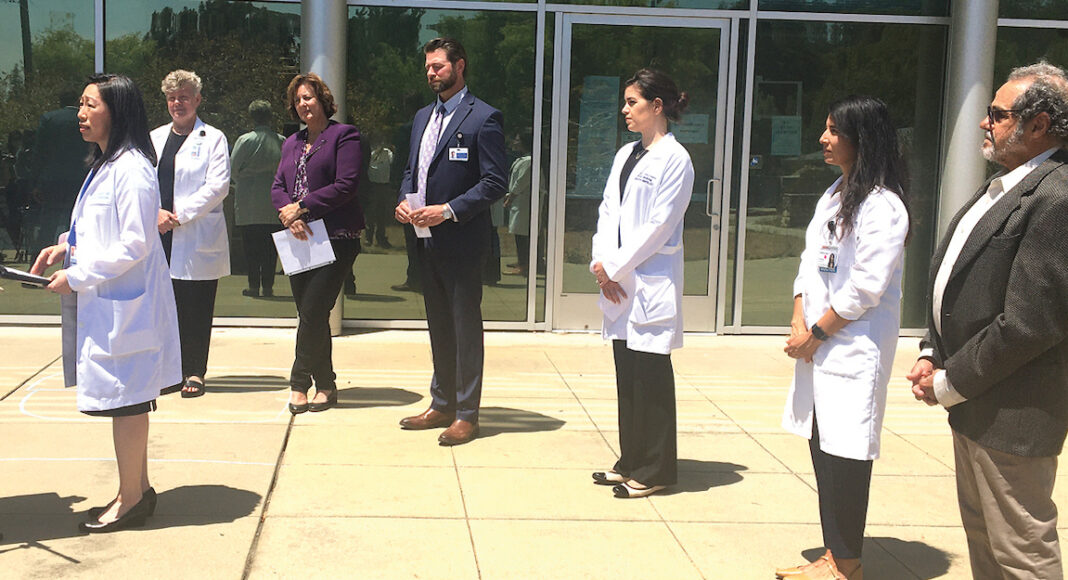A group of high-ranking medical care providers and officials on Thursday gathered at Santa Cruz’s Emeline health complex, a press conference convened to get a single message out to the public.
“We want to drive home the importance today of everyone eligible in our community to get vaccinated for Covid-19,” said Santa Cruz County Health Officer Dr. Gail Newel. “The time has never been more urgent.”
The pandemic is not over, Newel said, and cases are expected to increase through the fall. The biggest concern is the Delta variant of the disease, which is quickly spreading worldwide.
It is estimated that 80% of the state’s cases are now the Delta variant which, while not more lethal than other variants, is more transmissible, Newel told reporters.
Santa Cruz County currently has 11 confirmed cases of the Delta variant, she said.
Newel, and the health officials who spoke at the conference, said that people who are not vaccinated risk spreading Covid-19 to vulnerable populations, such as young people not yet eligible to receive the vaccine.
Unvaccinated people have an infection rate of 10 per 10,000, which would have placed them in the most serious purple tier under the system recently ended by the state. For those who have gotten the vaccine, that rate is 2 out of 10,000, which would have been the yellow tier.
The county is also beginning to see rising hospitalization rates for people infected with Covid-19, Newel said.
“Everyone who is currently hospitalized here in the county is unvaccinated, as we would expect,” she said.
“Really it’s one pandemic, and that’s a pandemic of the unvaccinated,” Newel added.
Dr. Nan Mickiewicz, Dominican Hospital CEO and President, said that after everyone in the community was vulnerable when Covid-19 first began its global spread, “the light at the end of the tunnel” came with the first vaccine.
Since then, Dominican has given more than 33,000 vaccinations, she said.
That number is sure to grow when children 12 and under become eligible to get theirs, Mickiewicz said.
“In our experience so far, the vaccine is safe, and it is effective,” she said. “And we’re going to keep vaccinating as long as people need it.”
Countywide, some 60% of the population has gotten their vaccine, said Dr. Catherine Martin of Sutter Health.
“We need to focus on closing the gap and vaccinating the remaining 40% of the population as soon as possible,” she said. “The longer we wait, the more time the virus has to mutate and place our community at risk of being infected by a new strain that cannot be controlled with our current vaccines.”
The low rate of vaccinated people is especially pronounced among people 30 and younger, Martin said.
These represent a “critical gap” in the community’s herd immunity, she said.
But these people can still contract Covid-19, Martin said, adding that young people are a major source of transmission.
“As a physician, I can tell you that being young and otherwise healthy does not guarantee natural immunity against Covid-19,” she said.
For information, visit bit.ly/3iFco72 or vaccines.gov.














